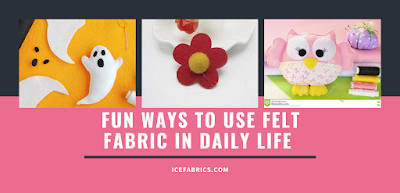Hearing is one of the many ways to interact with people. It is made by stitching, knitting, and compressing the fibers together to form a soft cloth that will be used in children's clothing or a fabric that is strong enough to make a yurt, a house built by nomadic peoples in Central Asia. Feeling that has been around for centuries, some art objects were discovered from as far back as the year 6,500 BC.
Uses of Felt Fabric
There are several ways to make you feel that another method of cutting the water in which the strands are controlled using soap and water is to grow the fur and other hairs of animals with scales and kinks on them that respond to that combination and bind together to form a felt fabric. The cloth can then be used for clothing, handbags, toys, air conditioners, working parts, drummers, door handles, handicrafts, horse collars and many more to mention here today. Another method of removing hair is the dry method using only sharp needles to press on the hair. This absorbs the wool so it is stronger. This technique is used by many talented artists and is known as needle felting. You can add images to something you hear or create decorations such as flowers or flat animals to decorate clothes or something like a cut bag. Another way to use dry cutting is to create 3D objects like dogs, cats and other animals or mushrooms, humans, no matter how fun your imagination may be.
If creating your own feeling seems like a lot of work you can always find a fur jersey or skirt etc, put it in the case of a zipped pillow and use it with the washing cycle of your washing machine. Use a small amount of hot water and a little soap and soon your jersey will be very thin and finished. This can now be cut and used to create something new like mittens, hats, a purse, just to name a few. So if you have a favorite candy that has been accidentally damaged in washing, don't despair that it can be reused to make so many lasting things for years to come.
For more information about What is Felt Fabric, its Uses and Types

Comments
Post a Comment